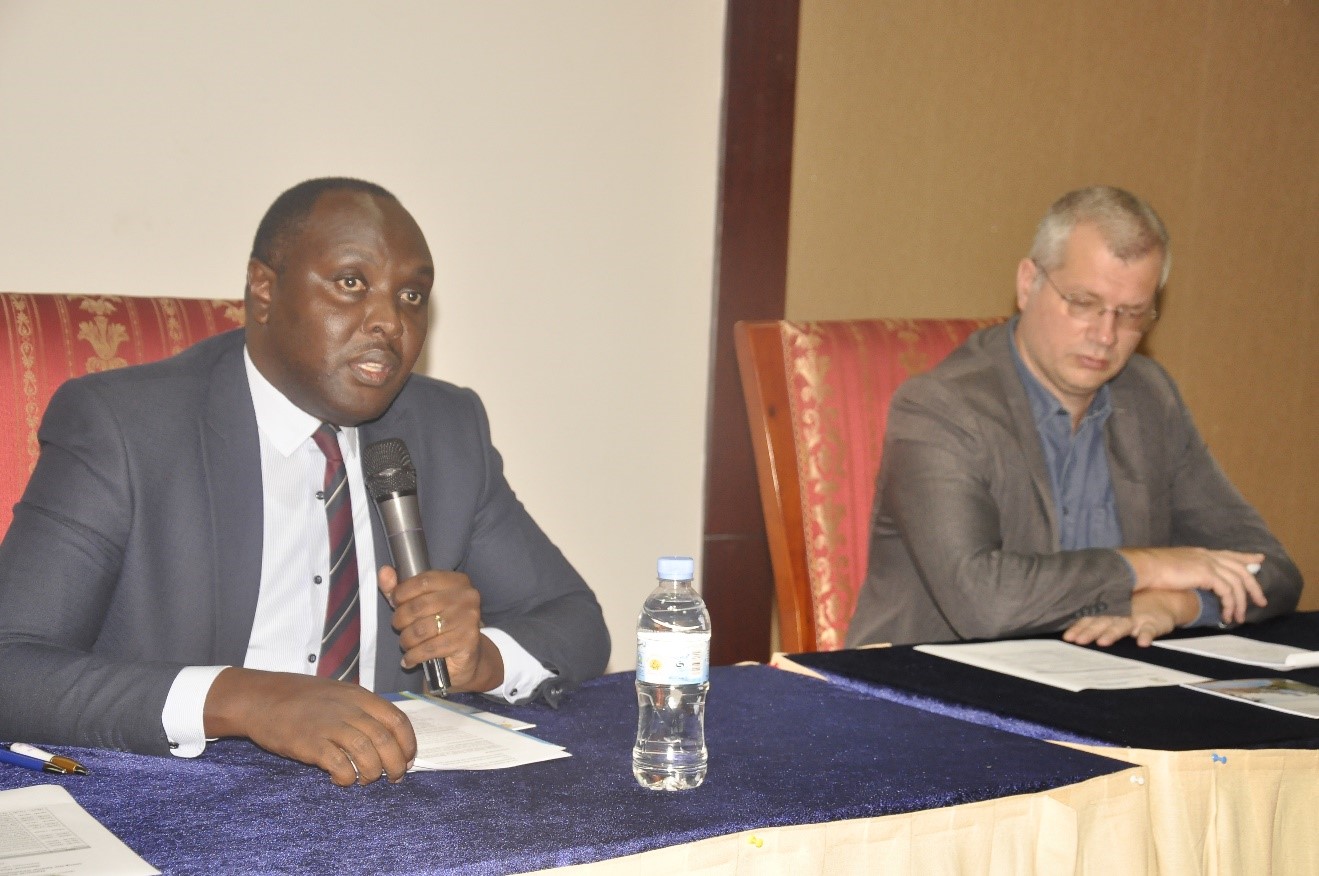Kigali, 12th September 2019- Ministry of Infrastructure (MININFRA) and its stakeholders in Urbanization Sector gathered in National Dissemination Workshop on National Strategic Action Plan for Rwanda Spatial Development Framework (SDF) organized by MININFRA in collaboration with UN-HABITAT.
In his opening remarks, Mr. Charles KALINDA, Head of Policy and Planning in the Ministry of Infrastructure highlighted the role of Spatial Development Framework (SDF). He said “SDF is a planning tool that will help Rwanda to make spatially-sound investment decisions, facilitate the harmonization between planning and budgeting from a spatial perspective and at the different level, monitor the performance of urban settlements based on approved policies and reinforce a system of cities/towns that can sustain territorial development”.
He added that in MININFRA’s perspective, the SDF is meant to facilitate the implementation of the National Urbanization Policy (NUP) by strategically looking at the system of cities and towns, development corridors and priority development areas to understand where to invest first and why.
Rwanda being a land-locked country with a high population density (approximately 430 persons/km2), Urbanisation in Rwanda, despite currently concerning 18.4% of the Rwandan population, is occurring at a very fast pace (4 to 5% per year, which by far exceeds the worldwide average of 2%). This important socio-economic and territorial transition offers the country an important opportunity to achieve its structural transformation, in line with the first National Strategy for Transformation (2018-2024).
This foundational step needs to be followed by subsequent legislative, institutional and planning reforms. On the latter aspect (planning), MININFRA requested UN-Habitat to prepare a Spatial Development Framework (SDF) which was recommended by National Urbanisation Policy adopted in 2015 and the SDF was issued in May 2016 and validated by the same Ministry in 2017.
The SDF results have indicated that, despite Kigali being centrally located and having established six secondary cities, Rwanda spatial development is not yet well-balanced and, consequently, urbanisation is occurring mostly in a spontaneous manner. In particular, the SDF confirms that all Districts play a role in forming a system of urban settlements and, thus, influence the overall urbanisation process.
Cities work as magnets, including for the rural surrounding areas, and as centres of innovation and services delivery. Their development and inter-linkages trigger important investments and population movements, hence there is a need to plan for these territorial dynamics strategically, by taking into account existing resources, local conditions and potentialities.
The workshop focused on a hard look at the findings of the National Strategic Action Plan preparation based on the data collected from all sectors in each District with the assistance of the District Technical Focal Persons. Participants got opportunity to discuss appropriate strategies on how to integrate the SDF-NSAP into the economic planning, budgeting and monitoring system of Rwanda.
Mininfra and stakeholders committed to work in synergy for successful use of SDF and better implementation of National Urbanisation Policy above mentioned. The Ministry has equipped the decision-room with IT facilities that will be utilised by stakeholders to facilitate the spatial planning process.

 ENGL
ENGL KINY
KINY